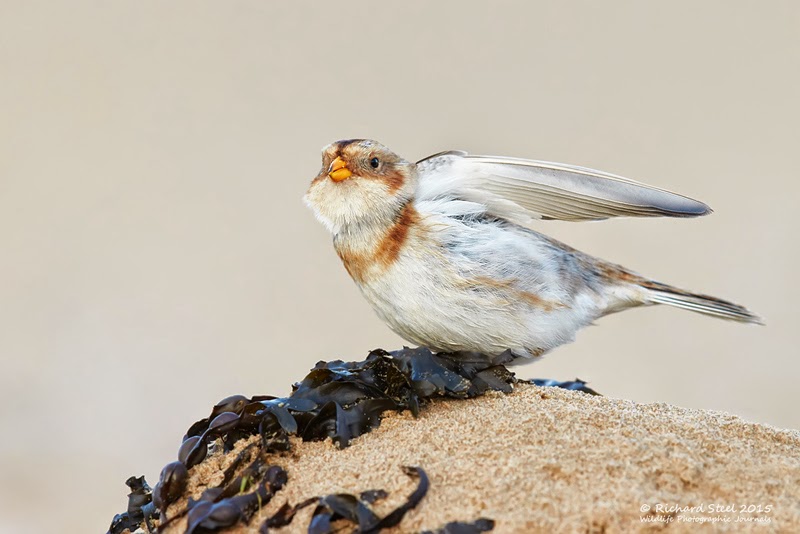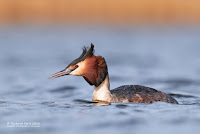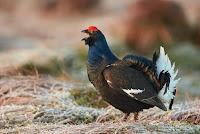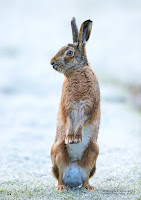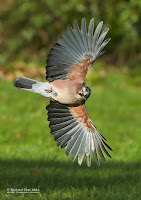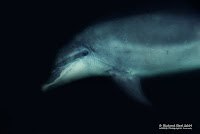Since then I have heard that wonderful sound of the curlew on many occasions and it always brings a smile. If you haven't heard one before then there is a recording on the link HERE . I am fortunate to have relatively good numbers of curlew close to my home in the winter. The birds descend from their summer upland breeding areas and gather on the coast to overwinter in the milder climate provided by the sea. The birds have used the same rough wet grassland field, which I have unimaginatively named the 'curlew field', to roost over high tide periods for many years. Typically there are around 50 birds present. Both male and female birds look identical except the females generally have the longest bills which they use to great effect to extract worms from deep within the soil below.
Curlew are wary birds which do the best to maintain as much distance between themselves and people. Typically they will start walking away from a person if they come within a 100 metres of them. So when photographing them everything has to be down very slowly and quietly. So for most of these photographs I was using kit that gave maximum reach so as not to disturb the birds. However, this does make it tricky when trying to photograph the birds in flight or if one does walk over very close. The Canon 7dmk2 performed very well and all of these were taken with this very capable body combined with a 600mm lens often with the tele-convertor added on the back.
It was particularly some flight photographs that I was interesting in trying to capture, although no easy task with an effective focal length of 1344mm!
In this high tide roost the birds spend long periods standing around sleeping and occasionally preening unless there is predator nearby. During one session a fox thought it would try and stalk the curlew but had little chance with 50 pairs of keen eyes watching and it gave up before it even got close.
The crows and gulls hassle the birds at the roost and occasionally a sparrowhawk will wing through that will put them to flight but generally all is relatively inactive. As the high tide passes on the coast, which about 150m to the north, the curlew start becoming more active. You can sense a restlessness amongst the birds which start stretching and preening, whilst small groups break away and start feeding. This period before they fly back over to the sandbanks as they are exposed by the ebbing tide provides the best opportunities for photography.
Before I started this post, I processed the images, and it was only then that I realised that this winter without any specific plan appears to have turned in to a bit of a curlew project. Time well spent in my opinion as these birds continue to hold a strange and strong fascination for me. The photographs below are from three brief afternoon sessions under the low winter sun. This soft golden light is always a pleasure to work with. They may not be the most colourful birds but I think you will agree that the patterning across the feathers in good light is beautiful.
It will not be too much longer now before the curlew start to depart and head back to the upland areas for breeding and the hills and valleys will be penetrated by that atmospheric call once again. I hope you are lucky enough to hear it yourself one summer's evening.























